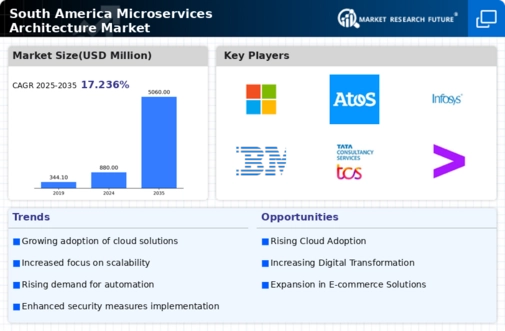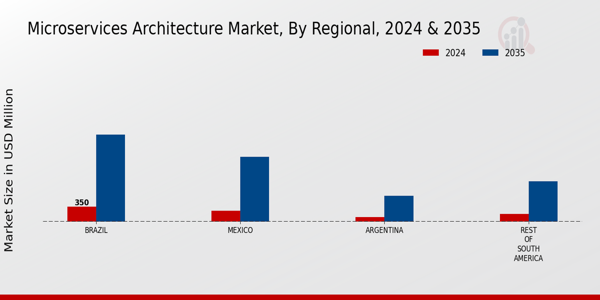The South America Microservices Architecture Market is rapidly evolving as businesses in the region recognize the need for flexibility and scalability in their IT infrastructures. This shift is driven by the increasing demand for deploying applications in a more agile manner, which microservices facilitate by allowing organizations to develop, deploy, and scale applications independently. A competitive landscape is forming as local and international players seek to establish a foothold in this growing market.
Industry players are innovating their offerings and forming strategic alliances to enhance their service delivery and meet the diverse needs of customers across various sectors, including telecommunications, finance, and retail. As microservices architecture becomes integral to digital transformation initiatives, insights into the competitive dynamics of this market are essential for stakeholders looking to capitalize on opportunities.Microsoft effectively leverages its global brand presence to strengthen its position in the South America Microservices Architecture Market. With a robust portfolio of cloud services and solutions, Microsoft provides a highly scalable and flexible cloud environment that supports microservices.
The company's Azure platform is particularly well-suited for deploying microservices architectures, given its comprehensive range of tools and features designed to streamline application development and management. Microsoft also emphasizes customer support, education, and training in South America, which enhances customer relationships and fosters loyalty.
By continuously investing in local talent and resources, Microsoft demonstrates its commitment to meeting the unique requirements of the South American market, further solidifying its competitive edge based on innovation and reliability.Atos is actively participating in the South America Microservices Architecture Market by offering comprehensive digital services and solutions designed to meet the needs of various sectors. The company's key offerings include managed services, cloud solutions, and application development services that support the adoption of microservices. Atos has established a strong presence in South America through strategic partnerships and collaborations, which have enhanced its service capabilities and expanded its reach.
The company's strengths lie in its expertise in transforming traditional IT environments into modern digital ecosystems that utilize microservices architecture for improved agility and responsiveness. Atos has also engaged in mergers and acquisitions aimed at bolstering its technological portfolio and expanding its footprint in the region. Such moves illustrate the company’s proactive approach to enhancing service delivery and adapting to the evolving demands of the South American market, positioning it as a formidable player in this competitive landscape.

























Leave a Comment